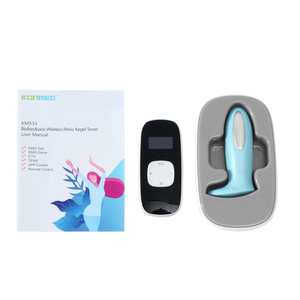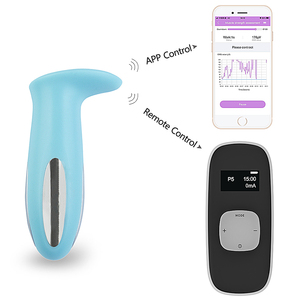(3433 products available)

















































































































































 Ready to Ship
Ready to Ship





































An industrial enema machine is a medical device that relieves constipation, cleanses the colon, or prepares the bowel for medical examination. Various enema machines are available depending on the procedure, as described below:
Standard Enema Machine
A standard enema machine features a large reservoir that holds the liquid to be inserted into the rectum. It has a long, flexible tube that connects the reservoir to a nozzle that goes into the rectum. Some models have a pump that helps push the liquid into the rectum.
The machine is typically made from plastic, rubber, or silicone materials. It is easy to clean and disinfect after each use. The standard enema machine is suitable for home use or in healthcare facilities where patients receive enemas.
Inflatable Enema Machine
This enema machine has a nozzle that inflates when the liquid is inserted into the rectum. The inflated nozzle forms a tight seal in the rectum, preventing leakage and ensuring all the liquid is retained for better results. After use, the nozzle deflates, making it easy to remove and clean.
The inflatable enema machine can be used with various liquids, such as plain water, saline solution, or soap suds. It is more effective than the standard model, as the tight seal increases pressure, which improves liquid absorption into the rectum and colon.
Douche Enema Machine
A douche enema machine is mainly used for cleansing and flushing purposes. It is commonly used before vaginal intercourse or surgery to remove any discharge or bowel movement to prevent embarrassment during the procedure.
The douche enema machine is easy to operate and highly effective for cleansing purposes.
There are a few things to consider when choosing an industrial enema machine for sale:
Types of enemas
Consider what type of enemas the machine will be used for. Some machines are designed specifically for saline enemas, while others can accommodate a variety of solutions.
Machine features
Look at the features of the enema machine. Some machines have heated water, while others do not. Heated water enemas can help relieve constipation, as the heat helps relax the intestines. Other features to consider include adjustable water pressure and the length of the tubing.
Ease of use
Consider how easy the machine is to use. Some machines come with a step-by-step instruction manual, while others do not. It is important to read all instructions before using the machine. Also, consider the time it takes to set up the machine before use. Some machines require more time to set up than others.
Cleaning and maintenance
Consider how easy the machine is to clean and maintain. Some machines come with a cleaning brush, while others do not. It is important to clean the nozzle and tube after each use to prevent bacteria from spreading. Also, consider the cost of replacement parts. Some machines require more replacement parts than others.
Cost
Consider the cost of the enema machine. Industrial enema machines can range in price depending on the features and size. Budget for the initial purchase and any potential replacement parts that may be needed in the future.
An industrial enema machine can help relieve constipation and other bowel problems. Here are instructions on how to use it.
Preparation
Prepare the solution recommended by the healthcare provider. Common choices include plain warm water, saline solution, or soap suds. Gather all necessary supplies, including the enema machine, tubing, nozzle, and solution. Find a comfortable and private location for the procedure.
Positioning
Lie on the left side with the knees pulled toward the chest. This position allows gravity to assist in the distribution of the solution in the rectum.
Administration
Gently insert the nozzle into the rectum. Aim toward the navel to prevent discomfort. Slowly squeeze the nozzle or use the machine's motorized pump to expel the solution into the rectum. Control the speed and flow as desired.
After Administration
When the desired amount of solution has been administered, remove the nozzle gently. Try to retain the solution for as long as instructed. Then, move to the toilet and expel the contents of the rectum.
It's crucial to follow the usage instructions for an industrial enema machine. Here are some precautions.
Consult a Healthcare Provider
Consult a healthcare provider before using the enema machine. This is vital if one has existing health issues or concerns. The expert will recommend the proper solution and frequency of use.
Use the Right Solution
Use the solution that the healthcare provider recommends. For instance, using tap water in people with weakened rectal lining can cause irritation. Medical-grade saline solution may be appropriate.
Start with a Small Amount
Begin with a small amount of solution and gradually increase it if needed. The rectum and colon may need time to adjust to the presence of liquid.
Observe the Body's Signals
Pay attention to discomfort or cramping during the procedure. If pain or cramping is severe, stop the process and expel the solution. Retaining it may be challenging.
Seek Medical Advice if Symptoms Persist
If the symptoms that prompted the enema use persist, seek medical advice. Avoid frequent enema use without professional guidance. It's vital to address the underlying issue rather than mask it with enemas.
Q1: What are the benefits of an enema?
A1: Enemas are beneficial for several reasons. They help detox the body, relieve constipation, and cleanse the bowel in preparation for medical procedures such as colonoscopy. They may also help retain important nutrients and electrolytes that enemas may expel.
Q2: What should be used for an enema?
A2: Warm water is the safest and best option for an enema. Other safe options include saline solutions or soap suds made with mild soap and warm water.
Q3: What are the dangers of enemas?
A3: Risks associated with enemas include cramping, bloating, and discomfort. In some cases, enemas can cause perforations in the rectum or damage to the bowel. It is also possible to develop infections or complications from enemas.
Q4: How long should an enema be held?
A4: It is generally recommended to hold the enema for at least 5 to 15 minutes before expelling it. This time frame allows the liquid to penetrate further up the colon, providing a more thorough cleansing.
Q5: What can be used as a enema fluid?
A5: Several fluids are safe to use for enemas, including warm water, saline solutions, soapy water made with mild soap, and baking soda dissolved in water. Generally, warm water is the safest and best option.